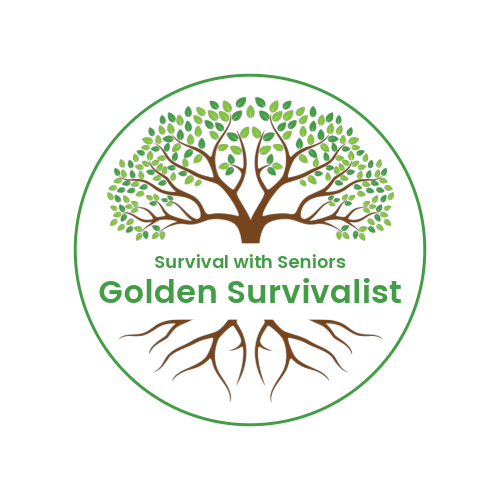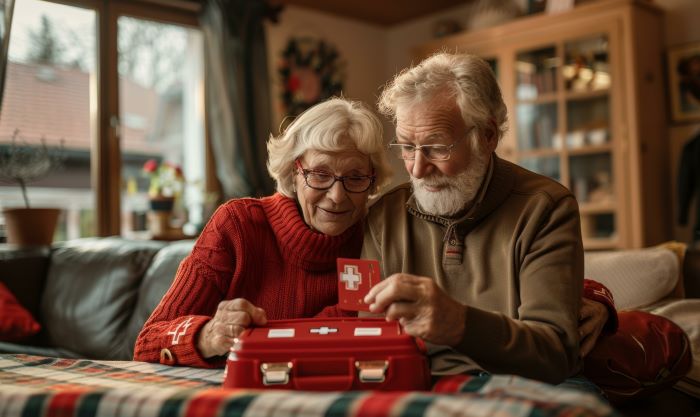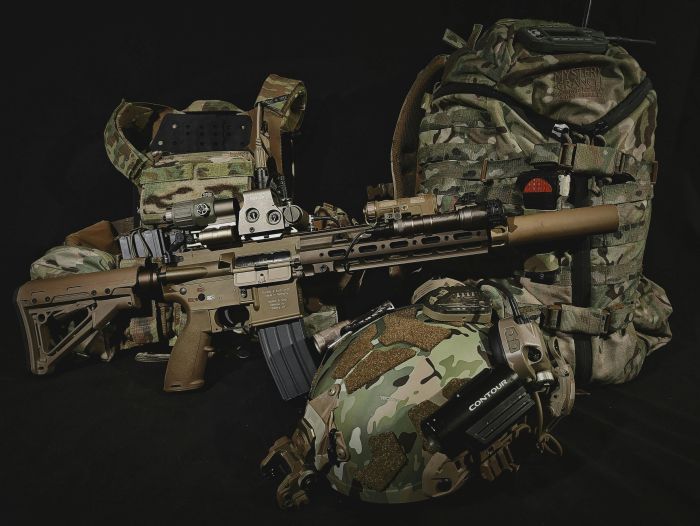How Sign Language Can Save Lives for Seniors in Emergencies

I’ve been thinking about how we can use sign language to save lives in emergencies. Not just for people with a speech disability but for survival in general. What if we are hiding from dangerous people who are trying to get our survival supplies or kidnapping one of us to use for a slavery situation? This threat is multiplied for seniors. I know. I read sci-fi books, so I’ve read of this scenario.
Sign Language Saves Senior’s Lives
Even in a non-threatening emergency scenario, imagine a situation where a senior is in distress, unable to speak, and alone. It happens more than we’d like to admit. The barrier to calling for help in such situations can immensely affect a senior’s chance of survival or quick assistance. I’ve seen firsthand how sign language can bridge this gap, serving as a vital tool for communication when traditional means fail.
Emergencies can be disorientating, and for seniors, particularly those with hearing impairments or speech disabilities, the challenges multiply. In such critical times, communicating distress or medical needs quickly and effectively is paramount. And that’s where sign language steps in as a lifesaver.

There are accounts of seniors who, thanks to their knowledge of sign language, have effectively conveyed their needs to bystanders or first responders, leading to timely medical intervention. The simplicity of a gesture for ‘help’ or ‘pain’ can mean the difference between timely aid and prolonged suffering. It can be that powerful.
Why is sign language so crucial for seniors during emergencies?
- First, it’s accessible—there’s no need for technology or even voice.
- Second, it can be understood from a distance, cutting through the noise and chaos that emergencies often bring.
- Third, sign language is universal in its most basic forms, making it an essential skill for any senior, regardless of their primary language.
Essential Sign Language Vocabulary for Senior Safety
Communication becomes paramount in emergencies, especially for seniors who may face additional challenges such as hearing loss or inability to speak due to medical conditions. Sign language becomes a key player in ensuring their safety.
So, what sign language vocabulary should every senior know? At its most basic, this includes signs for:
- ‘HELP’ – The sign for “help” is made by forming a loose-thumb-A hand (or even an “S” hand) and lifting it with your other hand. Some people will tell you the “A” hand should be your right hand. Others will tell you it should be your left hand.
- ‘PAIN’ or ‘HURT’ – The sign for “hurt” is made by extending the index fingers of both hands. Bring the fingers toward each other twice using a jabbing movement. A variation of this sign is to do a twisting movement as you bring the tips of the index fingers toward each other.
- ‘MEDICINE’ – Touch your right hand middle finger to your left hand palm. Then pivot the right hand side to side a couple times.
- and ‘DANGER’ – The sign for “danger” in ASL involves forming the letter “X” with both hands and crossing them in front of your body.
These building blocks allow seniors to signal distress and quickly get their needed assistance.
In addition to these core signs, it’s beneficial to learn expressions for:
- ‘FIRE’ – To sign fire, you stretch out and wiggle your fingers like the flickering flames of a fire. Form both hands in the open, ASL number 5 sign, with your fingers wiggling back and forth.
- ‘POLICE’ – Pronunciation (sign description): Dominant “C” hand, palm facing left if right-handed, taps twice on upper non-dominant side of torso. Variation: Dominant “small-C” or “clawed-C”, palm facing left, taps twice on upper non-dominant side of torso. Also meaning COP, SHERIFF, and/or CONSTABLE.
- and ‘DOCTOR’ – To sign doctor, take your strong hand, curve it, and touch it to the inner wrist of your non-dominant hand, like you are taking a pulse. An alternative ASL sign for doctor is to form a letter ‘D’ with your dominant hand, then touch it to the inner wrist of your non-dominant hand.
Knowing these can make the difference when time is of the essence and clarity is critical.
Remembering this vocabulary can be a hurdle, but association techniques—linking the sign with a vivid image or related memory—can significantly aid retention. Repeated practice is also crucial, and these vital signs are embedded as instinctual responses.
Resources are now widely available for those who want to learn these life-saving signs. Many community centers offer classes, and many apps and online platforms can provide interactive learning experiences from the comfort of your home.
We’ll venture into understanding and utilizing a basic sign language chart, a tool that complements the learning of essential vocabulary and fosters greater independence and preparedness in emergencies.
Understanding and Using a Basic Sign Language Chart
A sign language chart is an excellent starting point for seniors who are new to sign language. Think of it as a visual dictionary that displays the fundamental signs required for communication. It’s structured to offer quick access to the alphabet, numbers, and essential phrases that can convey immediate needs or requests.
Click here to download a Free Simple Sign Language Chart PDF
Utilizing such charts involves a few straightforward approaches. I suggest that seniors place these charts in easily viewable areas within their homes. Frequent exposure helps with memorization and can be the difference when quick communication is necessary. A chart on the refrigerator door, beside the phone, or even on a bedside table ensures it’s within reach during various scenarios.
Printed sign language charts are available, but digital versions can be invaluable. Many websites provide interactive charts where seniors can observe the signs being made. This allows for a better understanding of the hand shapes and movements, which static images can’t fully convey.
I recommend a regular, structured schedule to practice effectively with these charts. Setting aside time each day to review the signs can help solidify their memory. Engaging with friends or family in practice sessions is also helpful, as is creating simulated emergencies using these signs.
Marrying the sign language chart with the vocabulary you’ve learned from section two reinforces your ability to communicate efficiently. It’s one thing to know a sign, but integrating them into fluent communication during emergencies is another ball game entirely.
Debunking Common Sign Language Misconceptions Among Seniors
It’s easy to get tangled in misconceptions about sign language, especially if you’re learning it later in life. Seniors might feel that learning a new language is too complex or unnecessary, but understanding the truth about sign language can be a game-changer in emergencies.
One widespread myth is that sign language is universal. However, sign languages vary globally as spoken languages do. For senior Americans, American Sign Language (ASL) is the most relevant and is the one you’re most likely to need in an emergency.
Another common belief is that sign language is just a translated version of the spoken language. ASL, for instance, has its grammar and structure entirely distinct from English, so simply knowing English doesn’t equate to understanding sign language.
Some seniors might also think sign language is primarily for the Deaf or hard of hearing. While it is crucial for those communities, sign language is valuable for anyone. It can bridge communication in loud environments, when speech isn’t possible, or even when wearing a face mask, which has become a new reality for many.
There’s a misconception that it’s too late to learn sign language at an older age. Come on; you know as well as I do this is untrue. The truth is, it’s never too late. Seniors can learn and benefit from sign language just as much as younger people, mainly when it aids in crucial moments like emergencies.
Shedding these falsehoods paves the way for a more inclusive and safer community for seniors. Knowing the truth leads to empowerment, and with the correct knowledge, seniors can confidently navigate using sign language when it matters most.
A Guide to American Sign Language for Senior Emergencies
Seniors must have the skills to communicate during emergencies, especially if they cannot speak or hear in a stressful situation. American Sign Language (ASL) is a complete, nuanced language that can serve as a lifeline in times of crisis. This section will offer seniors a step-by-step guide to ASL phrases tailored to urgent situations.
Seniors should be proficient in signing HELP to convey an immediate need for assistance. This critical sign is performed by:
HELP – laying one fist over the other in front of you and moving it upwards, indicating lifting.
For medical emergencies, being able to sign PAIN is essential:
PAIN – Place the tip of your index finger on the spot that hurts and twist it back and forth a few times. The twisting motion can be more pronounced to indicate severe pain.
In the case of a FIRE, being able to alert others is paramount. The sign for FIRE involves:
FIRE – wiggling your fingers upwards from in front of your face, mimicking the movement of flames.
Practicing these signs regularly ensures that seniors can perform them under pressure. Integrating these signs into daily life can help build muscle memory to recall them quickly during an emergency.
Resources such as online videos, community classes, and practice groups can provide ongoing support and opportunities to learn and practice ASL. The local community center, senior center, or health services often offer programs for seniors to learn ASL.
Implementing Sign Language Strategies for Seniors in Crisis Scenarios
Sign language isn’t just a communication tool; it can be a critical lifeline for seniors in emergencies. Adopting and using sign language can initially seem challenging, especially when learning later in life. However, applying the right strategies can make it manageable and even enjoyable.

Learning effectively requires regular practice. Incorporating sign language into daily routines can enhance retention and promote confidence for seniors. Simple activities like signing the weather while watching the news or using sign language to label items around the house can reinforce learning.
Role-playing is a powerful tool for preparing for real-world emergencies. By simulating scenarios where verbal communication isn’t possible, seniors can practice conveying vital information quickly and efficiently using sign language.
Workshops or classes with peers provide not only instruction but also community support. Engaging with others on the same journey fosters an environment of mutual learning and encouragement.
The key to success with any new skill is persistence. Regularly refreshing and updating sign language knowledge ensures that when an emergency does arise, seniors are equipped to communicate their needs effectively. It’s not just about learning a skill; it’s about investing in safety and independence.
In conclusion, empowering seniors with sign language for emergencies is an act of foresight and compassion. As we’ve explored, the benefits extend beyond immediate safety; they provide security, increase self-reliance, and foster community connection. Let’s prioritize offering seniors the tools needed so that in times of crisis, they have the power to speak when words fail.
Have you learned any sign language? Would you share your experiences with sign language in a reply/comment below? Let’s help others with this valuable knowledge. Or, ask a question about sign language, too.






